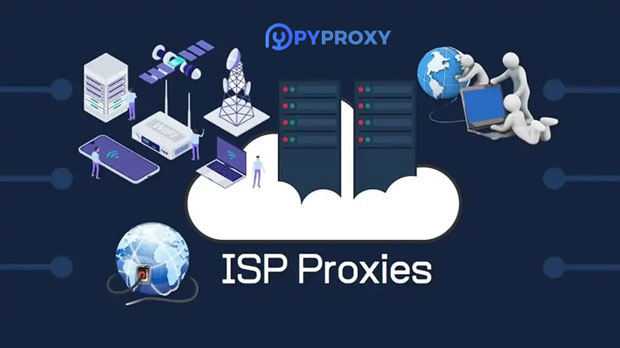How do I evaluate the responsiveness of customer support when purchasing a mobile proxy server?
When purchasing mobile proxy servers, evaluating customer support response speed is critical for ensuring that you receive timely assistance when issues arise. Proxies, especially mobile proxies, often serve essential functions in tasks such as web scraping, managing multiple accounts, and circumventing geo-restrictions. In this context, quick and effective support is crucial, as downtime or unresolved issues can negatively impact your business. This article explores practical steps to evaluate the responsiveness of customer support before purchasing mobile proxy servers, ensuring that users can make well-informed decisions and avoid potential frustrations. Why Customer Support Response Speed MattersThe importance of evaluating customer support response speed lies in its direct impact on your experience as a user. When dealing with mobile proxies, several factors may go wrong, including connectivity issues, IP bans, or configuration problems. The faster and more efficient the customer support team is in resolving these problems, the less likely your operations will be interrupted.Moreover, delays in support can lead to increased downtime, loss of revenue, or hindered productivity. In a fast-paced, dynamic environment where businesses rely heavily on proxies, ensuring that the support team is responsive can mean the difference between success and failure. Thus, understanding the response speed is crucial before committing to a mobile proxy service.1. Test the Customer Support Response Time During the Research PhaseBefore making a purchase, it's advisable to contact the customer support team and test their response time. Initiate an inquiry by reaching out to them via their available contact methods, such as email, live chat, or phone. When doing so, consider posing a simple yet pertinent question about the product or service. By observing how long it takes for the team to respond, you can gauge the overall response time.Testing the response speed is particularly useful because it not only informs you of how quickly they reply but also gives insight into their willingness to assist and the professionalism of their team. A quick and helpful response is a good indicator that they prioritize customer service, whereas a slow or unhelpful reply may raise concerns.2. Understand Different Support Channels and Their Response TimesMobile proxy providers often offer multiple support channels, each with varying response times. Understanding the differences between these channels can help set expectations regarding response speed. Here are common support channels and their general response characteristics:- Live Chat: This is often the fastest method of communication. Many businesses prioritize live chat, as it offers real-time, direct interaction. Expect quick responses within minutes. - Email: Email support is typically slower than live chat, but it allows for more detailed inquiries. While responses can take anywhere from a few hours to a day, the quality of support often outweighs the speed. - Phone Support: Some proxy services offer phone support, providing immediate assistance. However, availability may be limited to business hours or specific time zones, so response times can vary.- Ticketing Systems: Ticket systems are often used for more complex issues and can have varied response times. The advantage of tickets is that they create a structured way of tracking your issues and requests.By understanding these support channels, you can choose a service that matches your expectations for response times based on your needs.3. Assess the Quality of Customer Support Alongside SpeedWhile response speed is essential, it is equally important to assess the quality of support you receive. A fast response is helpful, but it is of little use if the assistance provided is inadequate or unhelpful. When testing customer support, pay attention to the following aspects:- Accuracy: Did the support team provide correct and relevant information? In the context of mobile proxies, details such as IP rotation, configuration, and troubleshooting are essential to ensure proper setup. - Helpfulness: Was the support team willing to go beyond a simple answer and provide a solution? A good support team will help you resolve the issue fully, guiding you through each step. - Professionalism: Was the tone courteous and respectful? Professionalism contributes to a positive support experience, even when dealing with technical issues.A service that combines speed with helpful, accurate, and professional support is a sign of a high-quality provider.4. Evaluate Support During Off-Peak HoursMany businesses operate under the assumption that customer support will always be available, especially during peak hours. However, it’s crucial to consider how a support team responds during off-peak hours, such as weekends or late evenings. Test whether the customer support team is still responsive outside regular business hours, or if you are left waiting for a prolonged period. For businesses that require 24/7 access to mobile proxies, this is an essential factor in evaluating customer support.Additionally, review the support availability and how the team handles emergency issues. For instance, a provider that offers 24/7 support or an escalation system in urgent cases is better equipped to handle critical situations quickly.5. Analyze Online Reviews and User FeedbackOne of the best ways to assess a mobile proxy provider’s customer support is to review what other customers have experienced. Look for user reviews, forum discussions, and social media feedback to get a sense of how the provider handles customer queries and issues.Focus on the frequency of support-related complaints and any praise for responsive, helpful service. If customers consistently report long wait times or poor support, it’s a red flag. However, consistently positive feedback indicates a responsive and dedicated support team.6. Consider the Importance of Ongoing SupportPurchasing mobile proxies is not a one-time transaction; it’s a long-term commitment. Continuous support will be necessary, whether you face technical issues, require upgrades, or need troubleshooting. The provider’s ability to offer consistent and ongoing support is a crucial factor in your overall satisfaction.For example, a provider that offers proactive support—such as regular check-ins, updates, and tutorials—adds significant value to the service. This ongoing assistance demonstrates the provider’s commitment to maintaining a relationship beyond the initial sale.Conclusion: The Role of Customer Support in Your Decision-Making ProcessEvaluating customer support response speed is a crucial part of purchasing mobile proxy servers. A prompt, professional, and knowledgeable support team can make a significant difference in ensuring smooth operation and resolving issues swiftly. When assessing a service, be sure to test response times, evaluate support channels, and consider the quality of customer interactions. By gathering as much information as possible from your research phase, including online reviews and firsthand testing, you can make a more informed decision and choose a provider that meets your expectations for customer support.In the world of mobile proxies, where downtime can be costly, a responsive and reliable support system can offer peace of mind, making it a vital aspect of any purchasing decision.
2025-02-19

























































